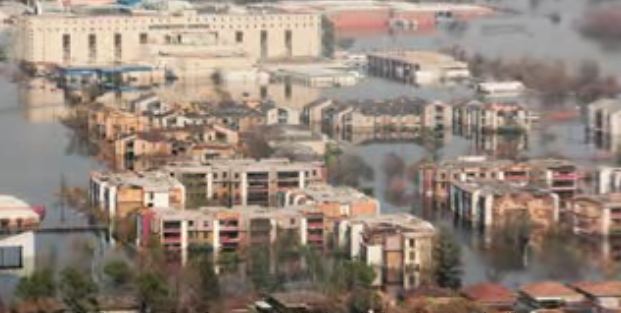Tropical Storms are violent, fast rotating winds characterized by intense rainfalls and low pressure fueled on warm oceans. Tropical storms have different names according to areas they originate and impact. In the western Pacific,tropical storms are known as typhoons.
Along the Indian Ocean, Tropical Storms are known as cyclones and in the Atlantic ocean and the Caribbean they are known as hurricanes
Tropical Storms are born in the vicinity(10-20o) off the equator where there’s a plenty supply of warm water. This distance is needed so that the Coriolis Effect is strong to spin the cloud since at the equator the force is weak.
For a tropical storm to develop, the temperature of water must be 26oC which triggers the uplift mechanism. Trade winds converge along the low pressure waters. Heated air becomes light, buoyant and therefore rises and condenses.
More winds converge and more latent heat is released further feeding energy to the storm. When he trade winds reach a curved (Coriolis Effect) part, the feature starts to spin and an eye is developed.
The eye is a region where air rises and, upon being cooled, can drop again continuously. The eye is more devastating and where most violent winds blow.
The cyclone moves westwards or in erratic paths placing some of the devastating winds and rains in its wake (path).

Tropical cyclones are characterized by very low pressures (below 900mb). Overland the cyclone can start to weaken due to friction and if it gets on water again it may regain its energy and continues its destruction.
Some of the destructive tropical storms are Hurricane Katrina (New Orleans USA 2005), Hurricane Gibson(Jamaica 1985) and Hurricane Irma (Puerto Rico, 2017).
Effects of Tropical Storms
- Widespread death especially in LEDCs due to late warning systems.
- Homelessness as houses are completely destroyed.

- Intense flooding (secondary)
- Road networks are cut-off.
- Electricity shortages
- Crops and livestock are destroyed.
- Financial losses to fix the damage.
Mitigation
- Implement early warnings so that people evacuate quickly before the storm hits.
- Building apartments with basements.
- Studying the storm’s pattern and route to place early warnings.
- Building levees around houses to create a barriers to floods (although MEDCs can implement such things)
